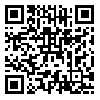Volume 5, Issue 3 (Spring-Special Issue on COVID-19 2020)
Health in Emergencies and Disasters Quarterly 2020, 5(3): 139-144 |
Back to browse issues page
Download citation:
BibTeX | RIS | EndNote | Medlars | ProCite | Reference Manager | RefWorks
Send citation to:



BibTeX | RIS | EndNote | Medlars | ProCite | Reference Manager | RefWorks
Send citation to:
HabibiSaravi R, Saleh Tabari Y, Ghasemihamedani F. Measures to Control Covid-19 Epidemic in Public and Reduce the Patient Load in Hospitals: A Report From Iran. Health in Emergencies and Disasters Quarterly 2020; 5 (3) :139-144
URL: http://hdq.uswr.ac.ir/article-1-298-en.html
URL: http://hdq.uswr.ac.ir/article-1-298-en.html
1- Center for Disaster Management and Medical Emergencies, Mazandaran University of Medical Sciences, Sari, Iran.
2- Red Crescent Society of the Islamic Republic of Iran, Mazandaran Province, Sari, Iran. ,fghasemihamedani@gmail.com
2- Red Crescent Society of the Islamic Republic of Iran, Mazandaran Province, Sari, Iran. ,
Abstract: (3821 Views)
After presenting the novel coronavirus (SARS-CoV-2) in china, it has spread rapidly in the community and now has declared as a pandemic causing coronavirus disease 2019 (COVID-19). At the date of writing this report, the COVID-19 has affected 192 countries and one international conveyance (the Diamond Princess cruise ship harbored in Yokohama, Japan) around the world with the total cases of 341,529. In Iran, the emergence of the disease was reported with two cases of COVID-19 deaths in Qom city on February 19, 2020, that caused great concern for the health system and the general public. It was rapidly spread around the country and reach to 21,638 definite cases by March 22, 2020. The special nature of the disease in rapid transmission among individuals in society requires urgent measures and serious actions to control it as quickly as possible. In this report, we describe the current status of the COVID-19 response strategy for reducing transmission in public and patient load in hospitals in Iran. Although Iran has tried to use the successful experience of other countries, such as China, for various reasons, such as non-quarantine of Qom province, as the primary site of disease propagation, lack of public quarantine, lack of seriousness by some citizens and officials, the lack of facilities and personal protective equipment needed for staff use, and restrictions regarding purchasing equipment from other countries due to international sanctions, have served as obstacles to achieve good results.
Type of article: brief report |
Subject:
Special
Received: 2020/03/3 | Accepted: 2020/03/22 | Published: 2020/04/1
Received: 2020/03/3 | Accepted: 2020/03/22 | Published: 2020/04/1
Send email to the article author
| Rights and permissions | |
 |
This work is licensed under a Creative Commons Attribution-NonCommercial 4.0 International License. |








